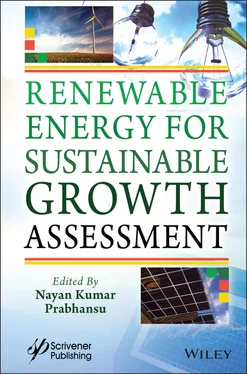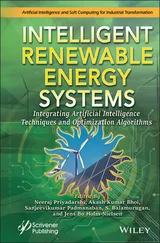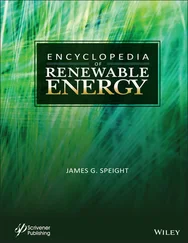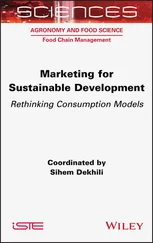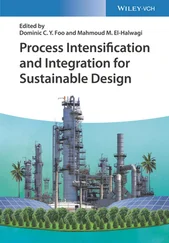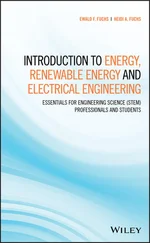Renewable Energy for Sustainable Growth Assessment
Здесь есть возможность читать онлайн «Renewable Energy for Sustainable Growth Assessment» — ознакомительный отрывок электронной книги совершенно бесплатно, а после прочтения отрывка купить полную версию. В некоторых случаях можно слушать аудио, скачать через торрент в формате fb2 и присутствует краткое содержание. Жанр: unrecognised, на английском языке. Описание произведения, (предисловие) а так же отзывы посетителей доступны на портале библиотеки ЛибКат.
- Название:Renewable Energy for Sustainable Growth Assessment
- Автор:
- Жанр:
- Год:неизвестен
- ISBN:нет данных
- Рейтинг книги:4 / 5. Голосов: 1
-
Избранное:Добавить в избранное
- Отзывы:
-
Ваша оценка:
- 80
- 1
- 2
- 3
- 4
- 5
Renewable Energy for Sustainable Growth Assessment: краткое содержание, описание и аннотация
Предлагаем к чтению аннотацию, описание, краткое содержание или предисловие (зависит от того, что написал сам автор книги «Renewable Energy for Sustainable Growth Assessment»). Если вы не нашли необходимую информацию о книге — напишите в комментариях, мы постараемся отыскать её.
This outstanding new volume
Renewable Energy for Sustainable Growth Assessment — читать онлайн ознакомительный отрывок
Ниже представлен текст книги, разбитый по страницам. Система сохранения места последней прочитанной страницы, позволяет с удобством читать онлайн бесплатно книгу «Renewable Energy for Sustainable Growth Assessment», без необходимости каждый раз заново искать на чём Вы остановились. Поставьте закладку, и сможете в любой момент перейти на страницу, на которой закончили чтение.
Интервал:
Закладка:
Sustainable development of pine bio-carbon derived thermally stable and electrically conducting polymer nano-composite films is presented in Chapter 11. Chapter 12includes power electronics on energy systems and its impact, the current energy scenario, advancement in power semiconductor technology, new power converters for renewable energy systems solar, wind and recent developments in multilevel inverter based PV systems. Chapter 13elaborates the importance of fuel cells (FCs) for alternative and sustainable energy systems. Chapter 14typically discusses working mechanism, efficiency and output emission of FCs, hydrogen production and transportation, uses of FCs in industries and automobiles, advancements in the high cost controls, and future advancements of FCs in the market. A huge number of recent ongoing published researches—over 10,000 per year—indicates that a proper use of FCs can easily replace the conventional engine vehicles in the near future. The focus of Chapter 15is designing, fabrication and testing of miniature hydel impulse turbine prototypes for powering household lightings and auto faucet system. In Chapter 16, the authors demonstrate the modeling, performance analysis, impact study and operational paradigms of a solar photovoltaic power plant. Chapter 17depicts a systematic survey of different control techniques used in microgrids. Significant recent developments and possible scope for future research are also addressed. In Chapter 18, a brief outline of the challenges in microgrid protection along with the techniques proposed to address them has been analyzed. Specifically, the challenges related to maintaining high reliability during the islanded condition, faults in the DER, and weather intermittency have been discussed at length. Chapter 19provides optimization theories of finance for generation portfolio. Chapter 20investigates simple and significant control strategies for the VSCs of the grid integrated PMSG-WES. The strategies are aimed to exert the coordinated control of basic and advanced functions adhering to the grid connectivity requirements of IEGC. As a mode of analysis, PSCAD/EMTDC model is devised to validate the presented control schemes based on experimental observations. Chapter 21studies radiant cooling systems with parallel desiccant-based dedicated outdoor air system with solar regeneration.
Dr. Nayan Kumar
Department of Electrical Engineering, Muzaffarpur Institute of Technology, Muzaffarpur, Bihar, India
E-mail: nayansays@gmail.com
Dr. Prabhansu
Department of Mechanical Engineering, Sardar Vallabhbhai National Institute of Technology Surat, Gujarat, India
E-mail: prabhansu.nitp@gmail.com
1
Biomass as Emerging Renewable: Challenges and Opportunities
Prabhansu1* and Nayan Kumar2
1Department of Mechanical Engineering, Sardar Vallabhbhai National Institute of Technology, Surat, India
2Department of Electrical Engineering, Muzaffarpur Institute of Technology, Muzaffarpur, Bihar, India
Abstract
Bioenergy is a widespread form of modern renewable energy source because of the devastating impacts of high demand for fossil fuel, i.e., global warming and environmental effects. This paper addresses the different engineering aspects of bioenergy and its international status. Bioenergy deals with their chemical structure, characterization, technologies available for conversion, scientific processes and their related products, all of which are are reviewed and discussed. Moreover, bioenergy-derived products are analyzed from environmental and techno-economic considerations, and observations and remarks are presented. Finally, the challenges faced expand the share of bioenergy employments in the global energy market and developed countries.
Keywords:Biomaterials, waste to energy, renewable energy, energy management
1.1 Introduction
Biomass is finding increased attention in industry and academia as one of the preferred choices of eco-friendly and sustainable energy sources. The need for biomass has multiplied in recent years because of government support in many countries and sharp cost reductions for power generation fuel and heat generation in industry and as a fuel used in transport. Biomass has so far been the renewable energy source most resilient to Covid-19 lockdown measures. The share of renewables in the global electricity supply reached nearly 28% in the first quarter of 2020, up from 26% during the same period in 2019 [1].
Bioenergy must be produced in ways that are environmentally, socially and economically sustainable. The potential is enormous to produce bioenergy cost-effectively and sustainably on existing farmlands and grasslands and to use residues from existing forests without encroaching upon rainforests.
Biomass is mainly classified into two categories: modern and traditional. In recent years, biomass has become a very popular source of renewable energy; its supply to final energy demand across all sectors is five times higher than wind and solar PV combined, even when the traditional use of biomass is excluded [1, 2]. Many countries are interested in developing biomass energy generation. The most responsible player for bioenergy market contraction is the US [3]. The cumulative capacity of biomass power worldwide from 2009 to 2019 is illustrated in Figure 1.1[4].
Bioenergy technologies utilize plant or animal waste, and it also involves material after their natural and artificial transformation and can be used for energy production [5–9] or, in other words, the resources of bioenergy are made of carbon, hydrogen, nitrogen and oxygen [10, 11]. Examples of bioenergy resources are bagasse, sawdust, household waste, and wastewater, pelletized agricultural waste, etc. [12–15].
The energy obtained from biomass will help in the reduction of dependency on fossil fuels [16–18]. In 2017, modern bioenergy contributed an estimated 5.0% to total final energy consumption, as shown in Figure 1.2[19]. Biomass is regarded as one of the major energy sources for several developing countries, and its use could be as high as 20-33%, but if one compares it with an industrialized nation, the total share could be as low as 9-14% of the total consumption of resources and the trend is gradually increasing [20]. It has traditionally been used since time immemorial, and its sustainable use is increasing rapidly because of its economic potential in terms of agricultural waste, sewage and household waste. This source of energy is carbon neutral since, at the time of growth of biomass, it absorbs CO 2from the atmosphere, which is added due to its combustion. Thus, it provides a net zero balance of total CO 2produced by it [21, 22]. Although the main focus of the current society is the use of fossil fuels but in order to fight climate change, biomass will definitely be beneficial at large [23]. Urban society is contributing 70% of the total CO 2addition to the environment and is contributing the most to climate change, and its after-effects are already beginning to show in several cities across the globe [24, 25]. With the help of available processes like physical, chemical and biological, biomass can be converted into gaseous, liquid and solid combustible substances [26, 27].
The biomass obtained from peanut shell, mango stone and the seed of sunflower is found to have a Higher Heating Value (HHV) very close to other commercially available biofuels [28–31]. Several research works are going on for the constant development of decentralized biomass boilers for energy production [32, 33]. Cogeneration means the use of low-grade fuels with high-grade fuels for the production of electrical energy [34]. In 2017, electricity from biomass-based sources was the third-largest renewable electricity source after hydropower and wind with 596 TWh of biopower generated and is shown in Figure 1.3[35]. China is the world leader in bioenergy-based electric power generation.
Читать дальшеИнтервал:
Закладка:
Похожие книги на «Renewable Energy for Sustainable Growth Assessment»
Представляем Вашему вниманию похожие книги на «Renewable Energy for Sustainable Growth Assessment» списком для выбора. Мы отобрали схожую по названию и смыслу литературу в надежде предоставить читателям больше вариантов отыскать новые, интересные, ещё непрочитанные произведения.
Обсуждение, отзывы о книге «Renewable Energy for Sustainable Growth Assessment» и просто собственные мнения читателей. Оставьте ваши комментарии, напишите, что Вы думаете о произведении, его смысле или главных героях. Укажите что конкретно понравилось, а что нет, и почему Вы так считаете.
